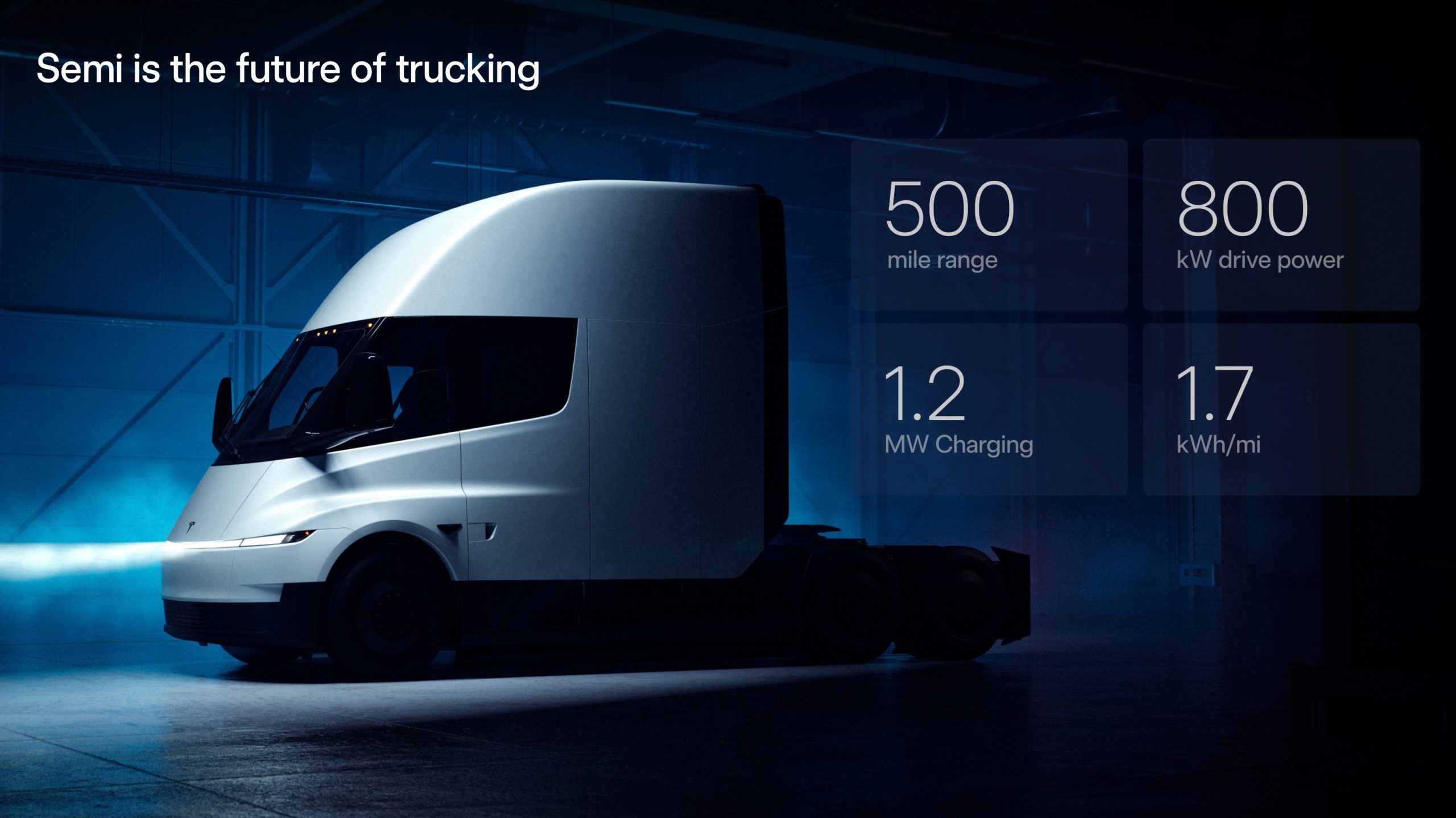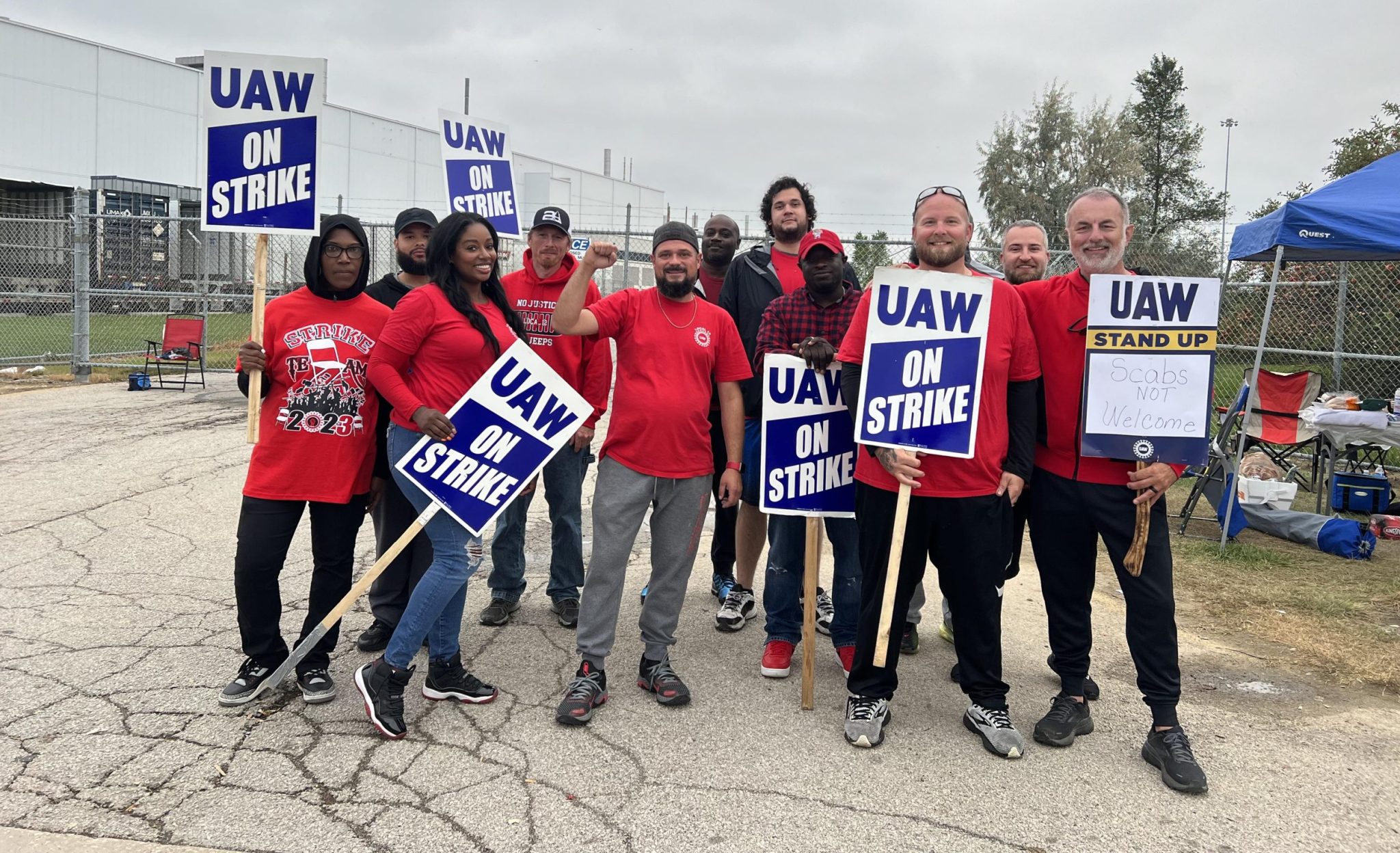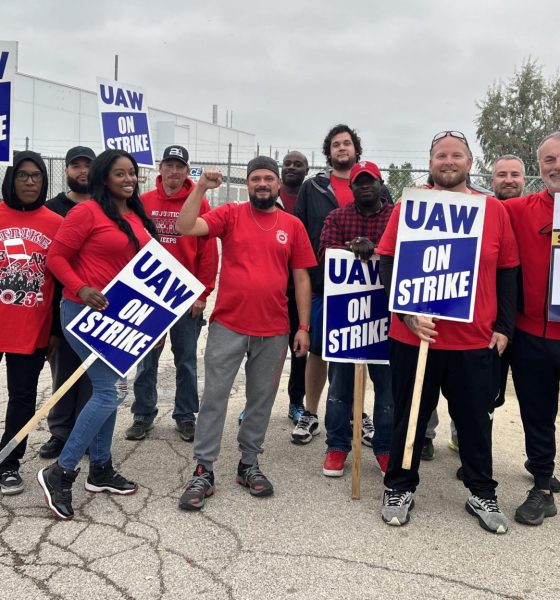On Friday, the United Auto Workers (UAW) union entered its 15th day on strike, accompanied by additional walkouts of General Motors (GM) Ford plants. Stellantis, the parent company of Chrysler, Dodge Ram and Jeep, managed to avoid heightened strikes after reportedly making some progress on contract negotiations.
After the UAW said last week that it would escalate strikes if progress wasn’t made on new contracts, the union officially ordered workers to walk off the job at two assembly plants on Friday: one run by Ford in Chicago, Illinois and another run by Stellantis in Lansing, Michigan, Reuters reports. Stellantis avoided the escalated strikes after UAW President Shawn Fain said the automaker made some last-minute concessions.
The news brings the total number of striking workers up to about 25,000, with the historic strike now in its third week. This is the first time in history that auto strikes have targeted all three of the automakers at once, with the UAW strategically striking at key facilities to disrupt supply chains and force negotiation.
The additional walkouts also mark the second Friday on which additional UAW workers vacated their work sites, with employees walking out of 38 more GM and Stellantis facilities on September 22.
Following the updated walkouts on Friday night, Ford CEO Jim Farley and GM CEO Mary Barra laid into the UAW.
“It’s clear that there is no real intent to get to an agreement,” Barra said.
Yahoo Finance reported on Friday that Farley said the UAW was holding an agreement “hostage” over battery plants, adding that the union’s demands “could have a devastating impact on our business.”
Farley recently also stated that the union’s demands would bankrupt Ford if enacted. Tesla CEO Elon Musk reiterated a similar point this week, saying a 32-hour work week combined with a 40-percent wage hike would be a “sure way” to make the three automakers go bankrupt.
“I need to be clear about one thing, because the UAW is scaring our workers by repeating something that is factually not true, none of our workers today are going to lose their jobs due to our battery plants during this contract period or even beyond this contract,” Farley said. “In fact, for the foreseeable future, we will have to hire more workers as some workers retire in order to keep up with the demand of our incredible new vehicles.”
The union responded that neither Farley nor Barra showed up to bargaining this week.
“We want to get agreements,” Fain said on Friday outside the Lansing GM plant. “We have been there every day 24/7 since the middle of July, we have been there every day. It’s ironic that some of these CEOs make these statements and literally the CEO of Ford has been in probably three meetings over the course of these nine or 10 weeks.”
President Biden backs UAW’s demand for a 40-percent pay raise
Ford Supply Chain Officer Liz Door said that if strikes continued, we could see as many as 300,000 to 500,000 employees laid off across the auto industry, especially in auto supply positions. Farley said that the 125,000 jobs held by Ford suppliers would also be put “at risk” without a deal.
In a separate report, Reuters also noted that the UAW dropped charges previously filed against GM and Stellantis with the National Labor Relations Board (NLRB), which alleged unfair labor practices at the two companies and claimed that the companies weren’t bargaining in good faith.
The UAW represents about 150,000 workers at the three auto companies, and the current strikes make up about 17 percent of the total figure. The UAW is demanding the following in updated union contracts:
- 40-percent wage hikes over four years
- 32-hour work weeks
- Eliminating tiered wage systems requiring several years to reach top wages
- Restoring traditional pension plans
- Restoring wage cost-of-living-adjustments (COLA)
- Improved vacation, retirement and family leave
The automakers have offered wage increases of about 20 percent in contracts over the four years, though negotiations reportedly remain far apart.
Some expect the situation to positively affect non-unionized electric vehicle (EV) maker Tesla, though others point out that the strikes are likely to make wages — and subsequently car prices — increase alongside those of the three legacy automakers. Among the topics regularly discussed during negotiations is the fact that EVs have fewer parts than gas cars and thus will require fewer workers in the future.
Trump claims electric vehicle shift will kill jobs, so UAW talks don’t matter
What are your thoughts? Let me know at zach@teslarati.com, find me on X at @zacharyvisconti, or send your tips to us at tips@teslarati.com.

News
Tesla Cybercab tests are going on overdrive with production-ready units
Tesla is ramping its real-world tests of the Cybercab, with multiple sightings of the vehicle being reported across social media this week.

Tesla is ramping its real-world tests of the Cybercab, with multiple sightings of the autonomous two-seater being reported across social media this week. Based on videos of the vehicle that have been shared online, it appears that Cybercab tests are underway across multiple states.
Recent Cybercab sightings
Reports of Cybercab tests have ramped this week, with a vehicle that looked like a production-ready prototype being spotted at Apple’s Visitor Center in California. The vehicle in this sighting was interesting as it was equipped with a steering wheel. The vehicle also featured some changes to the design of its brake lights.
The Cybercab was also filmed testing at the Fremont factory’s test track, which also seemed to involve a vehicle that looked production-ready. This also seemed to be the case for a Cybercab that was spotted in Austin, Texas, which happened to be undergoing real-world tests. Overall, these sightings suggest that Cybercab testing is fully underway, and the vehicle is really moving towards production.
Production design all but finalized?
Recently, a near-production-ready Cybercab was showcased at Tesla’s Santana Row showroom in San Jose. The vehicle was equipped with frameless windows, dual windshield wipers, powered butterfly door struts, an extended front splitter, an updated lightbar, new wheel covers, and a license plate bracket. Interior updates include redesigned dash/door panels, refined seats with center cupholders, updated carpet, and what appeared to be improved legroom.
There seems to be a pretty good chance that the Cybercab’s design has been all but finalized, at least considering Elon Musk’s comments at the 2025 Annual Shareholder Meeting. During the event, Musk confirmed that the vehicle will enter production around April 2026, and its production targets will be quite ambitious.
News
Tesla gets a win in Sweden as union withdraws potentially “illegal” blockade
As per recent reports, the Vision union’s planned anti-Tesla action might have been illegal.

Swedish union Vision has withdrawn its sympathy blockade against Tesla’s planned service center and showroom in Kalmar. As per recent reports, the Vision union’s planned anti-Tesla action might have been illegal.
Vision’s decision to pull the blockade
Vision announced the blockade in early December, stating that it was targeting the administrative handling of Tesla’s facility permits in Kalmar municipality. The sympathy measure was expected to start Monday, but was formally withdrawn via documents sent to the Mediation Institute and Kalmar Municipality last week.
As noted in a Daggers Arbete report, plans for the strike were ultimately pulled after employer group SKR highlighted potential illegality under the Public Employment Act. Vision stressed its continued backing for the Swedish labor model, though Deputy negotiation manager Oskar Pettersson explained that the Vision union and IF Metall made the decision to cancel the planned strike together.
“We will not continue to challenge the regulations,” Petterson said. “The objection was of a technical nature. We made the assessment together with IF Metall that we were not in a position to challenge the legal assessment of whether we could take this particular action against Tesla. Therefore, we chose to revoke the notice itself.”
The SKR’s warning
Petterson also stated that SKR’s technical objection to the Vision union’s planned anti-Tesla strike framed the protest as an unauthorized act. “It was a legal assessment of the situation. Both for us and for IF Metall, it is important to be clear that we stand for the Swedish model. But we should not continue to challenge the regulations and risk getting judgments that lead nowhere in the application of the regulations,” he said.
Vision ultimately canceled its planned blockade against Tesla on December 9. With Vision’s withdrawal, few obstacles remain for Tesla’s long-planned Kalmar site. A foreign electrical firm completed work this fall, and Tesla’s Careers page currently lists a full-time service manager position based there, signaling an imminent opening.
News
Tesla Semi program Director teases major improvements

Tesla Semi Program Director Dan Priestly teased the major improvements to the all-electric Class 8 truck on Thursday night, following the company’s decision to overhaul the design earlier this year.
Priestley said he drove the Semi on Thursday, and the improvements appear to be welcomed by one of the minds behind the project. “Our customers are going to love it,” he concluded.
Just drove the redesigned Semi. Our customers are going to love it. https://t.co/KZ88sf1CDL
— Dan Priestley (@danWpriestley) December 19, 2025
The small detail does not seem like much, but it is coming from someone who has been involved in the development of the truck from A to Z. Priestley has been involved in the Semi program since November 2015 and has slowly worked his way through the ranks, and currently stands as the Director of the program.
Tesla Semi undergoes major redesign as dedicated factory preps for deliveries
Tesla made some major changes to the Semi design as it announced at the 2025 Annual Shareholder Meeting that it changed the look and design to welcome improvements in efficiency.
Initially, Tesla adopted the blade-like light bar for the Semi, similar to the one that is present on the Model Y Premium and the Cybertruck.
Additionally, there are some slight aesthetic changes to help with efficiency, including a redesigned bumper with improved aero channels, a smaller wraparound windshield, and a smoother roofline for better aero performance.
All of these changes came as the company’s Semi Factory, which is located on Gigafactory Nevada’s property, was finishing up construction in preparation for initial production phases, as Tesla is planning to ramp up manufacturing next year. CEO Elon Musk has said the Semi has attracted “ridiculous demand.”
The Semi has already gathered many large companies that have signed up to buy units, including Frito-Lay and PepsiCo., which have been helping Tesla test the vehicle in a pilot program to test range, efficiency, and other important metrics that will be a major selling point.
Tesla will be the Semi’s first user, though, and the truck will help solve some of the company’s logistics needs in the coming years.










